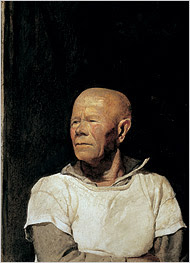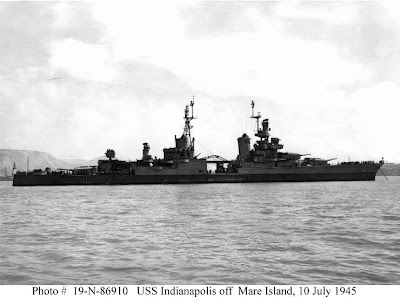Pittburgh's Ryan Clark on Baltimore's Willis McGahee
There was a pretty frightening moment in the Pittsburgh Steelers - Baltimore Ravens AFC title game a couple of weeks ago when Pittsburgh safety Ryan Clark put a brutal (but legal) hit on Baltimore running back Willis McGahee, knocking them both senseless. McGahee was wheeled off the field on a stretcher and sent to the hospital. Clark was also sent to the hospital for a concussion test afterwards. Clark said after the game, "This is the first time I've ever had any head injury. It's the first time I've had to take any concussion test afterwards... If you look at most of my hits, I always try to turn and lead with my shoulder, even the McGahee hit. I try my best to tackle in a way where I don't put myself at risk."
Pittburgh's Ryan Clark on New England's Wes Welker
I'm not quite so sure about that... It was helmet-to-helmet. Clark has a reputation for being an intimidator who can bring the "big hit." It's very similar to the one he put on an unsuspecting Wes Welker as he was running an inside route earlier this season. Years ago, there was a lot of talk about helmets being used as intimidating weapons in NFL games, spurring imitation at lower levels from the NCAA down to Pop Warner.
Florida's Major Wright on Oklahoma's Manny Johnson
With the ensuing outcry, things seemed to get better for a while, but with the pressure to win combined with the intense competitive spirit of the game and glaring media spotlight, it appears to me to be on the rise again. I love football, and I like to watch a tough physical contest as much as anyone else, but there's a right way and a wrong way to tackle. I know these defensive backs love to put a good stick on these flashy receivers who can burn them and make them look bad, but there's something gutless about putting your helmet in the chin of a man who's helpless and completely exposed.

My oldest son loved playing youth football, even though he's not very big. His first coach was great guy, but a stern and demanding taskmaster. My son loved playing for him. Go figure... Sometimes kids can take orders and discipline from other people better than they can from their own parents. At any rate, his coach told me later that the first time he saw my son's lack of size and experience, he thought to himself, "what am I going to do with this kid?" Over time, however, my son impressed him with his coachability and his toughness (a commodity the coach found to be generally lacking in our town). He wound up starting at cornerback and was moved to inside linebacker by the end of the season.
One thing that helped was the fact that I'd taught him how to tackle and his coach had reinforced the same lesson. To tackle someone (anyone) properly, you put your shoulder right into his belt buckle, drive, and wrap up. A ballcarrier can try all the head fakes, eye shifts, and fancy footwork he wants, but the hips don't lie. The hips invariably tell you the direction someone is moving in. A little guy can tackle a big guy this way just using the proper mechanics.
For his second season, my son wasn't able to move up to the next division with his coach and the rest of the squad because he hadn't put on enough weight. He was unhappy with his new coach, because he allowed too much head-to-head contact in practices. This lack of disclipline frustated and irritated my son. When he started complaining of headaches after practices, that was it. No more football.

From that point on he's gotten more serious about his soccer and has become quite good at it, although I still think swimming and diving are his best sports.
The gist of all this? The cost of all the helmet-to-helmet activity is becoming more and more visible in the NFL and elsewhere. The two starting quarterbacks in the Super Bowl, Kurt Warner and Ben Roethlisberger, have each suffered from a number of serious concussions in their careers. In this article, As study reveals NFL headache, concussions could cloud Kurt Warner and Ben Roethlisberger, its says...
Ted Johnson, formerly of the New England Patriots, was known as our "Bettis-Stuffer." This linebacker out of Colorado was one of the few defenders in the league who could stop this pantload from Pittbsurgh, Jerome Bettis, one-on-one. The contact from those, and other clashes, left a terrible legacy for Johnson.A Boston University study unveiled this week uncovered new evidence concerning chronic traumatic encephalopathy, a degenerative brain disease caused by head trauma. Six former NFL players, all dead by 50, were found to have the condition, which doctors say can cause victims to lose control of their emotions, suffer depression and eventually, dementia.
Andre Waters and ex-Steeler guard Terry Long, committed suicide, and a third, ex-Oilers linebacker John Grimsley, died after accidentally shooting himself. Tom McHale, a former Bucs offensive lineman, died of a drug overdose. Justin Strzelczyk, the former Steelers lineman, died in a head-on collision after leading New York State Thruway police on a high-speed chase.
Two of the players, former Eagle defensive back
In addition, the study reported the discovery of damage from CTE in the brain of a deceased 18-year-old who suffered multiple concussions while playing high school football.
Read Johnson's story in: 'I don't want anyone to end up like me' - The Boston Globe
"Officially, I've probably only been listed as having three or four concussions in my career," Johnson said. "But the real number is closer to 30, maybe even more. I've been dinged so many times I've lost count."
It has all unraveled; his career, his marriage, his health, his reputation. Former Patriots linebacker Ted Johnson was once a Super Bowl champion and a fan favorite, admired for his jarring hits and thoughtful approach to a violent game.
But now he is a struggling ex-athlete who has become unreliable and unreachable -- making promises and commitments he does not keep -- the subject of steamy tabloid gossip, shunned for an alleged domestic abuse incident involving his wife.
Johnson, 34, suffers from such severe depression that some mornings he literally cannot pull himself out of bed. When the crippling malaise overtakes him, he lies in a darkened room, unwilling to communicate with his closest family members.
The 10-year NFL veteran believes his current state is a direct result of a career in which he absorbed "countless" head injuries, including back-to-back concussions suffered within days during the 2002 season, when he says the Patriots didn't give him proper time to recover.
Desperate for answers, Johnson scheduled an appointment to receive electric shock treatment before deciding at the last moment to forgo that option.
Johnson's multiple symptoms include depression, dizziness, excessive drowsiness, fatigue, irritability, memory loss, poor concentration, ringing in the ears, and acute sensitivity to noise.
According to Dr. Cantu, who has been treating Johnson since last May, post-concussion syndrome can occur from a single concussion, but is more likely to occur after multiple concussions, and most likely to occur when the patient has endured back-to-back concussions without time for the first concussion to clear.
Johnson toyed with going public with his story before. He shared his struggles with the Globe last summer, but later requested his comments be put on hold. The recent suicide of former NFL defensive back Andre Waters, who had multiple concussions and suffered from depression, finally prompted Johnson to come forward.
"I want people to realize that you don't have to 'black out' to have a concussion," he said. "Most times, the symptoms of a concussion don't show up for hours, sometimes days. And this isn't just happening in the NFL. High school kids get concussions, and aren't properly monitored.
"Every day there is a new study linking concussions to depression, as well as early onset of Alzheimer's disease. It doesn't have to happen. It shouldn't happen.
"I don't want anyone to end up like me."
One of the things that bothered me the most about Clark's hits is that they remind me very much of the one that Jack Tatum left on Darryl Stingley which left him paralyzed.
Listen to WBUR ON-Point: Concussions and the NFL NFL wives speak out. Are their husbands suffering brain damage from playing in the National Football League?












